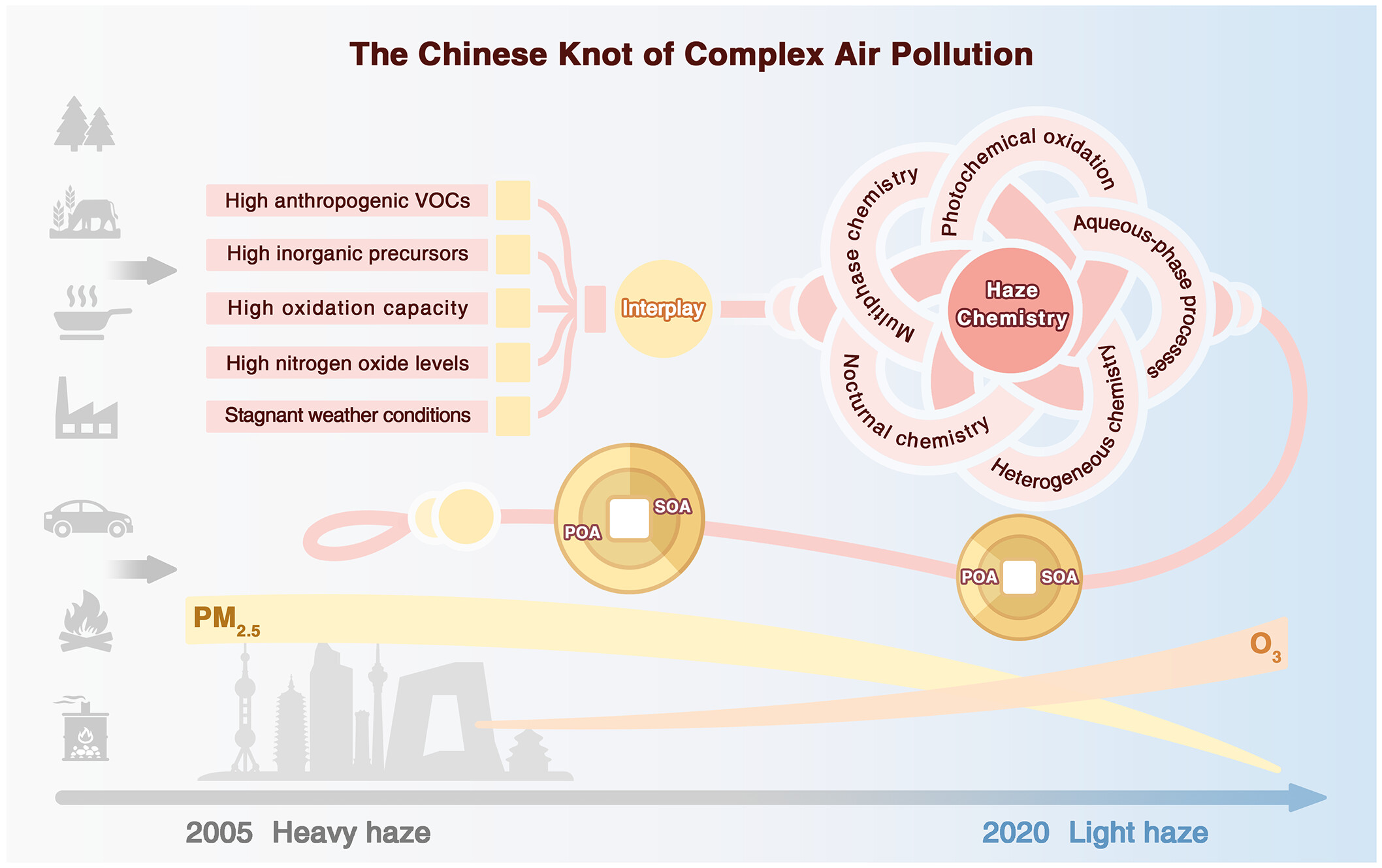Air pollution from secondary organic aerosols (SOA) has now become a greater problem in Chinese cities since 2013 because regulations have successfully reduced fine particulate matter (PM2.5) emitted directly from, for example, vehicles and industries, according to a study led by Prof. HUANG Rujin at the Institute of Earth Environment of the Chinese Academy of Sciences and Prof. Marianne Glasius at Aarhus University.
The study, published in Science on August 28, uncovers a distinct chemical regime governing the formation of SOA in urban China and highlights the significant rise in SOA relative to primary organic aerosols-particularly since 2013, when nationwide regulatory measures led to a marked reduction in direct emissions across the country.
SOA forms in the atmosphere through chemical reactions involving precursor substances such as nitrogen oxides and volatile organic compounds (VOCs). Historically, haze events in urban China-characterized by high levels of PM2.5-were driven primarily by direct emissions. Today, however, secondary aerosols-most notably SOA-play an increasingly dominant role.
To unravel the factors shaping this shift, the research team compared Chinese haze events with historical air pollution records from Europe and the United States. Their analysis revealed that complex interactions between multiple atmospheric environmental factors collectively drive the unique formation of SOA in Chinese urban air. The team further identified four key drivers of this phenomenon:
First, compared to urban areas in Europe and the U.S., Chinese cities exhibit greater diversity in VOC species and higher overall VOC concentrations. These VOCs originate mainly from dense industrial facilities, combustion sources, and solvent use.
Second, high concentrations of gaseous nitrous acid in Chinese urban air generate significant amounts of hydroxyl radicals via photolysis-a process that substantially boosts atmospheric oxidative capacity during winter months.
Third, elevated nitrogen oxide levels promote the formation of nitrogen-containing organic compounds, particularly peroxyacyl nitrates. These compounds extend the lifetime of organic peroxy radicals, intensifying regional secondary pollution.
Fourth, interactions between inorganic and organic pollutants-coupled with multiphase processes, especially increased aerosol liquid water content linked to rising nitrate fractions-further accelerate the formation of aqueous-phase SOA.
Beyond identifying these mechanisms, the study explored the broader implications of anthropogenic SOA formation and transformation, including its effects on particulate hygroscopicity (the ability to absorb moisture), optical properties, and human health.
The researchers emphasized that a deeper understanding of these dynamics is critical to advancing knowledge of SOA-related oxidants, precursors, formation mechanisms, properties, and impacts in complex air pollution scenarios-insights that could inform more targeted strategies for haze mitigation in China and beyond.

The Chinese knot of complex air pollution explains a distinct chemical regime for SOA formation in urban China. (Image by Prof. HUANG Rujin)






